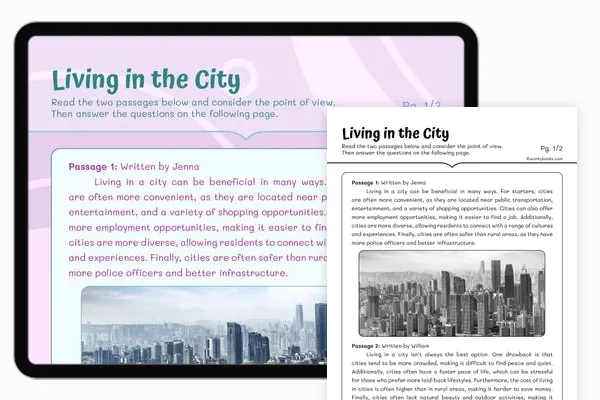The Discovery of Penicillin — Reading Comprehension
Grades
- 4
- 5
Standards
- RI.4.6
- RI.5.6
PRINT+DIGITAL RESOURCE
This learning resource is available in interactive and printable formats. The interactive worksheet can be played online and assigned to students. The Printable PDF version can be downloaded and printed for completion by hand.
About This Reader
This passage compares Alexander Fleming's firsthand laboratory notes on the discovery of penicillin with a secondhand account from a medical journal. Fleming's notes capture the immediate observations and potential significance of the accidental discovery, focusing on the specific details observed in the lab. The journal article provides a broader historical context, explaining the development of penicillin into a usable drug and its impact on modern medicine. This comparison allows students to analyze how firsthand and secondhand accounts differ in focus, detail, and perspective, particularly in scientific discoveries. The passage aligns with CCSS.ELA-LITERACY.RI.4.6 standards and enhances understanding of how scientific breakthroughs are reported and contextualized.
Perfect For:
👩🏫 Teachers
- • Reading comprehension practice
- • Auto-graded assessments
- • Literacy skill development
👨👩👧👦 Parents
- • Reading practice at home
- • Comprehension improvement
- • Educational reading time
🏠 Homeschoolers
- • Reading curriculum support
- • Independent reading practice
- • Progress monitoring
Reading Features:
📖
Reading Passage
Engaging fiction or nonfiction text
❓
Comprehension Quiz
Auto-graded questions
📊
Instant Feedback
Immediate results and scoring
📄
Printable Version
Download for offline reading
🔊
Read Aloud
Voice-over with word highlighting













